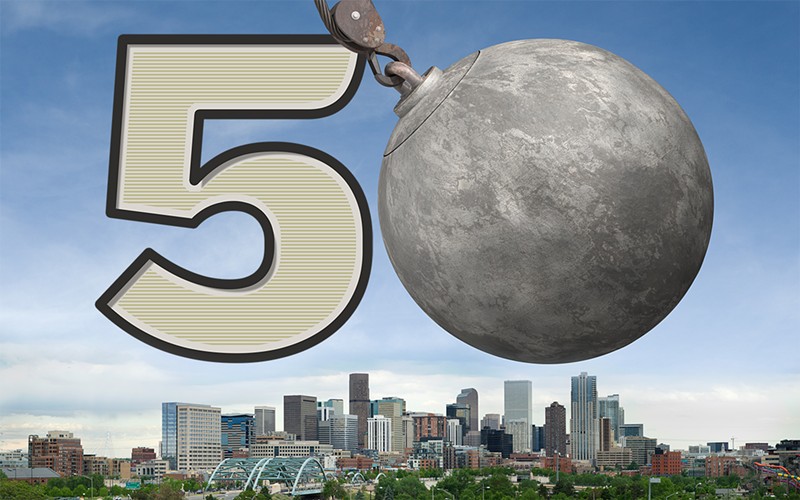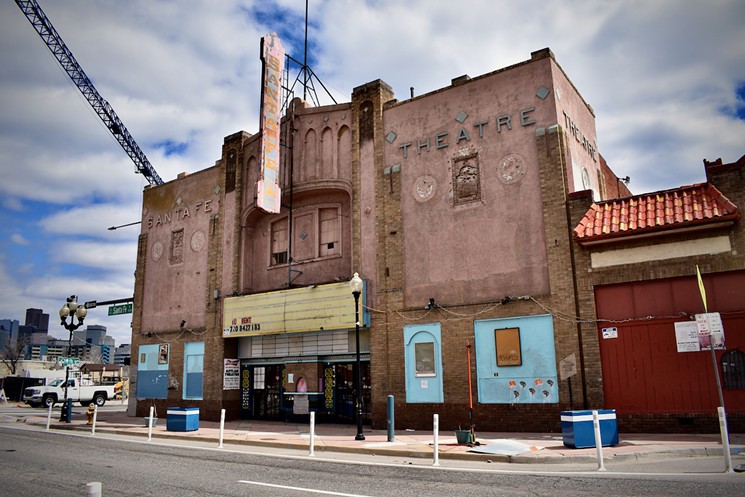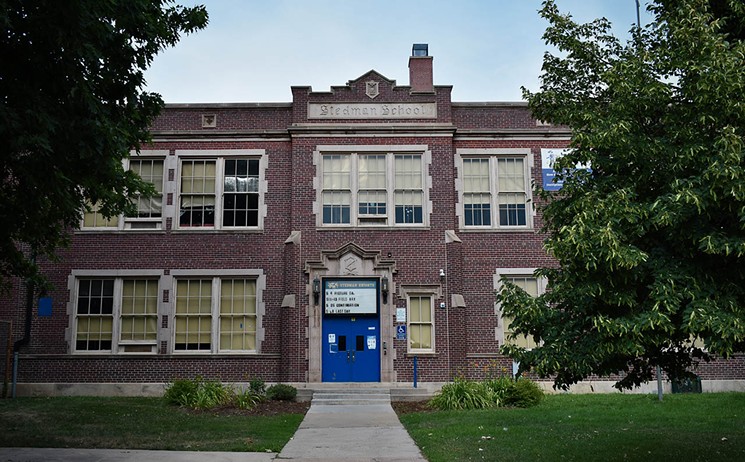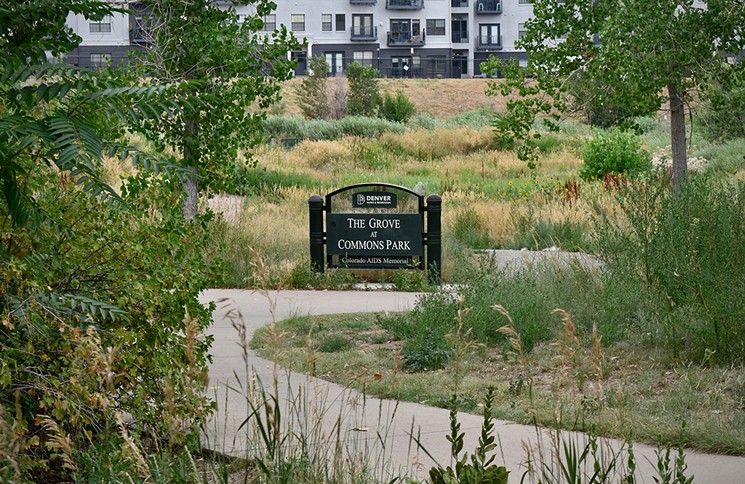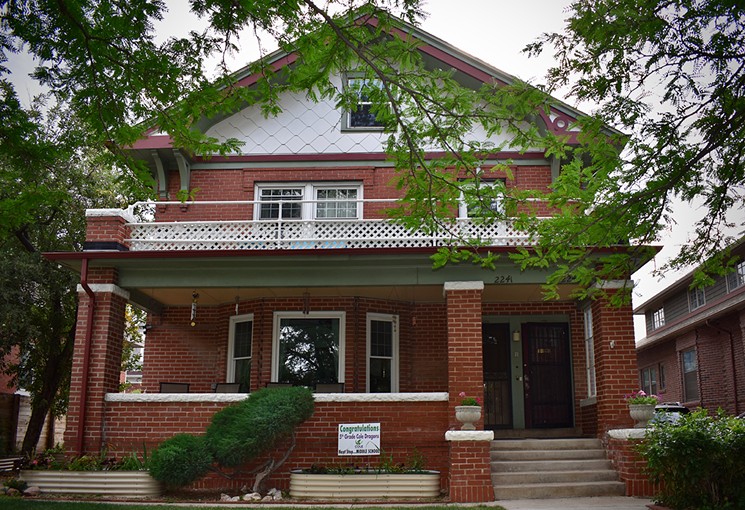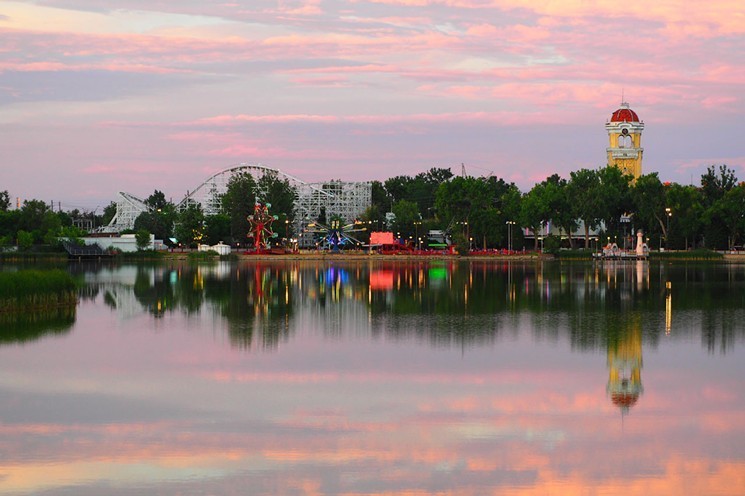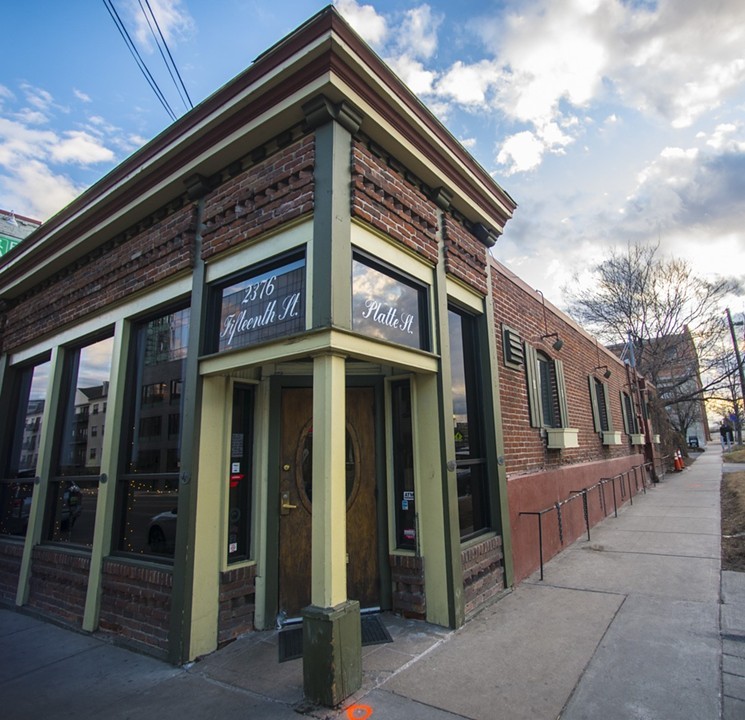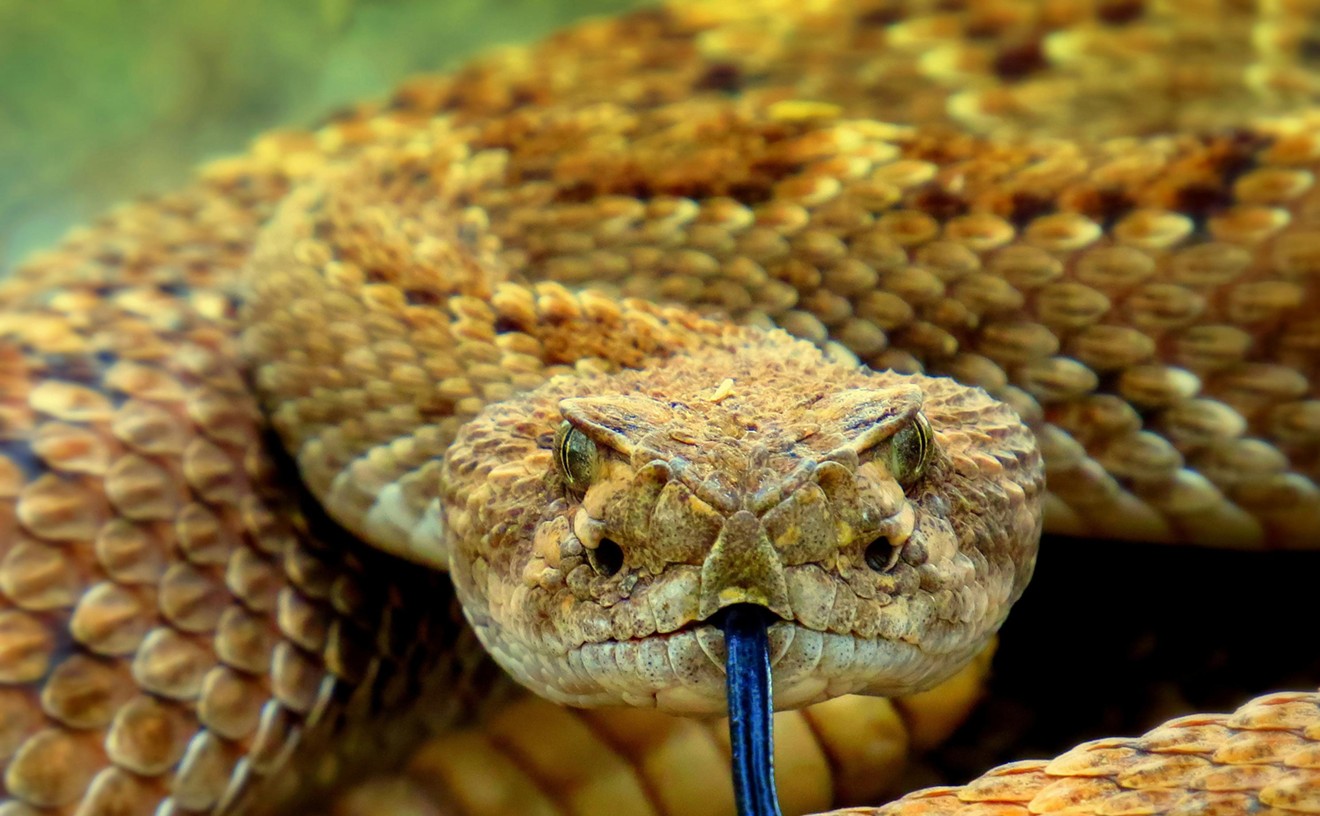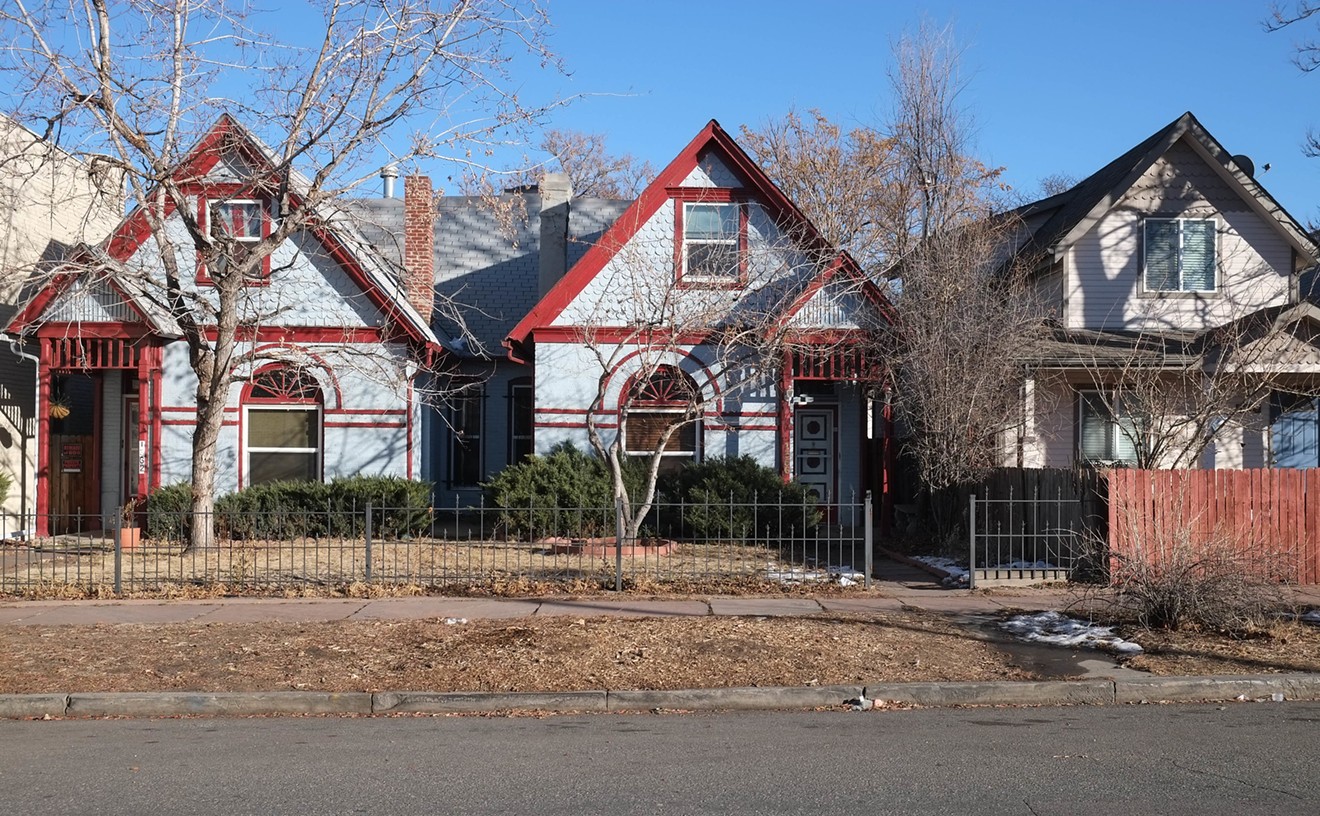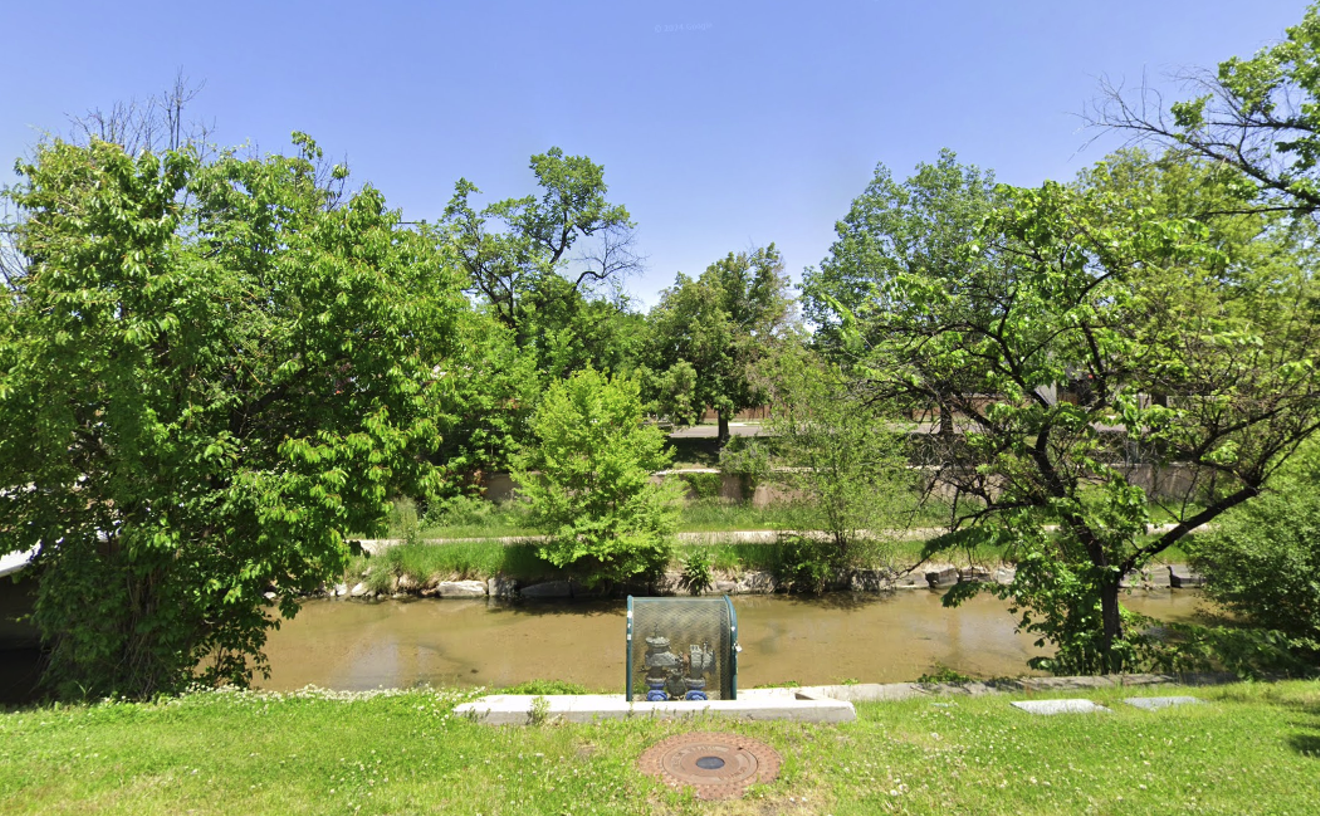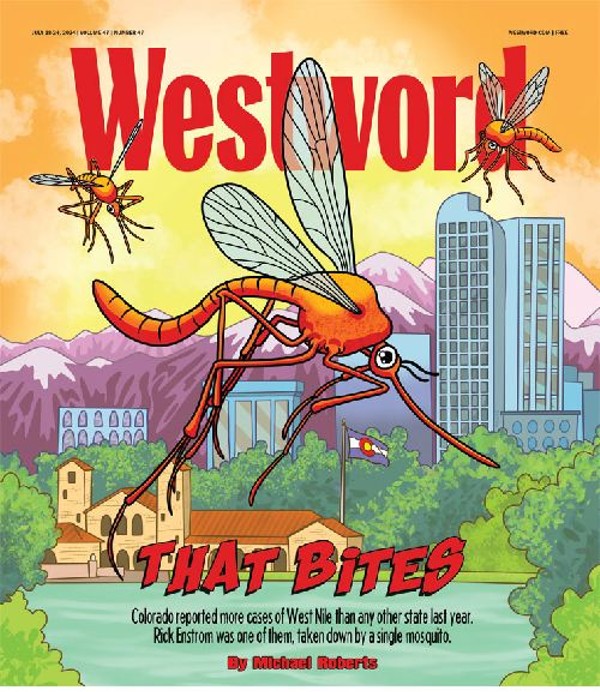After all, a group that came together in response to another crisis — the urban-renewal movement of the late ’60s, which was wiping many legacy buildings off the map — knew how to take the long view, and postponed some events while planning others.“The idea was to be proactive and positive,” explains executive director Annie Levinsky. “I think preservation too often gets a reputation for being reactive.”
So this past spring, Historic Denver announced that it was launching 50 Actions for 50 Places, taking nominations for spots and spaces deserving of preservation attention. They didn’t have to be architectural wonders or engineering marvels — just important to the story of Denver. They didn’t have to be in imminent danger, or even threatened — just parts of the past worth celebrating.
They had to be places that you "couldn't imagine Denver without."
The initial plan was to release the list of those that made the cut in May, during National Preservation Month, but that timetable proved overly ambitious when more than 100 nominations arrived. Historic Denver staffers researched all of them, then took them through a scoring process and presented them to a review panel with members of a preservation committee. After the list was reduced to fifty places, Historic Denver contacted the owners of all of them — including the notoriously elusive proprietor of Lakeside Amusement Park — to see if they’d be averse to having their real estate show up on a list of fifty places that should stick around Denver for at least the next fifty years. No one refused (though Lakeside’s Rhoda Krasner didn’t answer). Some owners had actually nominated their own properties. Others had been suggested by relatives. Still others have been offered up by admiring strangers.
Levinsky was surprised by the scope of the nominations, even if some of the places she’s been keeping her eye on, including the old Burnham Yard train area, weren’t mentioned. Another particular interest, La Alma Lincoln Park, the heart of so much of this city's Chicano history, was already well on its way to becoming the city's second historic cultural district, approved by Denver City Council on August 2. But Levinsky was also excited to see how involved so many people were in all aspects of the city’s heritage, from cultural accomplishments to kitsch. “There were things we didn’t expect,” she says. “The number-one thing, the pleasant surprise, was the diversity, range and also types of things represented. The other thing that was surprising was so many hidden stories. These might be buildings that people go by all the time but never think about.”
For example, there was the old horse trough in downtown Denver, a school that was intrinsic to the U.S. Supreme Court’s desegregation decision, a house Levinsky herself passed every day that had been designed in the ’30s by brothers who lived in the Auraria neighborhood and were educated in Chihuahua. It reminded her that history happens everywhere, to everyone.
“When we looked back at our history and saw how much great, grassroots activity there had been in our early years, part of our inspiration for Historic Denver’s fiftieth anniversary was, how do we do that again?” Levinsky recalls. “This isn’t just something that happens because it’s done by the city or a select group of people. It’s really everyone.”
After coming up with the final list of fifty and dividing them into categories such as Civic Asset and Legacy Business, the work is just beginning. Now Historic Denver will come up with “appropriate action plans” for the sites. In some cases, the action might just be signage. In others, it might be securing landmark status for the locations — as Historic Denver has done for so many places in the past.
“These fifty sites demonstrate the meaning, value and diversity of historic places in our city,” Levinsky concludes. “We can’t wait to launch the partnerships and strategies that will amplify the stories and significance of each place in support of an inclusive, vibrant and rooted city.”
And the fifty (divided by category) are:
ARTS AND ENTERTAINMENT
Aztlan Theatre
976 Santa Fe Drive
Constructed in 1927, the Aztlan Theatre was originally named the Santa Fe Theatre. Built by W.J. Carter, it included a full stage for roadshow attractions, vaudeville entertainment and movie screenings. In 1966, the then-closed building was reopened by Abel Gallegos, a musician and Chicano activist. It became one of the only theaters in the city showing Spanish-language Mexican films in the 1960s, a tradition that was carried on after it was purchased in 1972 by another activist, Timeo Correa, who renamed it the Aztlan. In the ’80s it hosted many rock bands, including the Red Hot Chili Peppers and Run D.M.C., but it remains a symbol of Denver’s rich Chicano heritage.
Bob Ragland Home of the Non-Starving Artist
1723 East 25th Avenue
Bob Ragland, who billed himself as the “non-starving artist,” passed away earlier this year — but his legacy lives on in his home and studio in the Whittier neighborhood. Ragland often sold art off of his porch; his son nominated the building for future preservation action.
Old Elitch Gardens Carousel House
3775 Tennyson Street
Elitch Gardens left its original home in northwest Denver decades ago, leaving behind not just the theater building — which is already a landmark, and celebrating its 130th anniversary this year — but the circa 1926 pavilion that housed the amusement park’s second carousel. A cultural oasis in the middle of relatively new construction, it is now used for special events.
Bear Mountain and Monkey House
Denver Zoo, 2300 Steele Street
The Denver Zoo knows it has something special with Bear Mountain, the first “natural habitat” animal enclosure in the United States that was built in accordance with Carl Hagenbeck’s revolutionary concept that people should see animals at eye level, without bars and fences. The circa 1918 facility became a prototype for habitats across the country. Adding it to the 50 Actions campaign is “a great way to build awareness,” says Levinsky.
Street Clock by E. Howard & Co.
770 South Broadway
If you’ve lived in Denver long, you’ve no doubt driven past this clock that stands alone on South Broadway. An unofficial landmark, it was designed by E. Howard & Co., a famous clock company based in Massachusetts. But while Historic Denver has “found a ton of information about the company, we actually haven’t been able to find out who put it there,” Levinsky says. Can anyone help?
CIVIC ASSET
Stedman Elementary School
2940 Dexter Street
Constructed in 1925, Stedman Elementary School was designed by architect George L. Bettcher as part of a ten-year plan to address growing school demand after World War I. Stedman could make the list on architectural merits alone — but this building also packs a lot of cultural history. It was key to school integration efforts in Denver that resulted in the landmark U.S. Supreme Court case Keyes v. School District Number One, in which the justices ruled against practices leading to de facto segregation in public schools.
National Humane Alliance Watering Trough
Tremont Place and West Colfax Avenue
Yes, at one point Denver was a true cowtown. This watering trough was presented to the City of Denver in 1907 by the National Humane Alliance and was designed as a place that would give horses and other animals access to clean water. “It actually has been kind of improved lately,” Levinsky says, crediting the repairs to recent street work. While few horses stop by for a drink these days, its story remains a good way to soak up some history.
Benedict Fountain
475 East 20th Avenue
Four-legged animals weren’t the only ones that enjoyed Denver’s liquid assets. Architect Jacques B. Benedict dedicated this fountain to the children of Denver as a Christmas gift in 1932. The pool below the fountain was intended as a place where kids could enjoy wading and sailing toy boats.
Garden Place Academy
4425 Lincoln Street
Garden Place Academy is one of Denver’s oldest continuously operating schools, having opened its doors in 1904 in Globeville, home to many of the city’s most recent immigrants. That was decades before Interstate 70 divided the community, with ongoing construction on the highway and at the National Western Complex continuing to rock the area.
Halprin Fountains at Skyline Park
1110 17th Street
Renowned landscape architect Lawrence Halprin designed Skyline Park during Denver’s Skyline Urban Renewal Project, when many of the city’s not-officially- historic buildings were razed and replaced by parking lots — or, in the case of Skyline Park, three blocks of designed open space. When Skyline Park was redesigned in 2003, most of the original early-’70s design was destroyed, but two fountains remain. They were cast in concrete, designed to reflect the Rocky Mountains, Levinsky says, and proponents would definitely like to save at least one for the future.
Wellshire Inn
3333 South Colorado Boulevard
The Tudor-style Wellshire Inn was built in the 1920s to serve as the clubhouse for what was then a private golf club. The city eventually acquired the property, making the course public. For years, the Wellshire Inn was a city-owned, go-to restaurant for special events; today, under a lease deal, it’s an event center available for rent.
Eisenhower Park Picnic Pavilion
4300 East Dartmouth Avenue
Denver City Councilwoman Kendra Black nominated this unique park pavilion with a folded roof for the 50 Actions list. It’s adjacent to the 1950s-era recreation center in Eisenhower Park, and represents an era that has yet to make many appearances on Historic Denver’s list.
CULTURAL RESOURCE
The Grove, Colorado Aids Memorial
Commons Park
Dedicated on August 12, 2000, the Grove is Colorado’s memorial to the victims of AIDS, designed as a quiet place of contemplation in Commons Park between the Platte River and Little Raven Street. These days, it’s quiet because “people just don’t know it’s there,” says Levinsky, “and why it’s there.” It’s there because Doug McNeil, a Denver realtor, wanted a place where people could go and meditate on those who’d been lost to the disease; the concept was based on “The Grove” National AIDS Memorial in San Francisco. McNeil himself died of AIDS in 1993, seven years before this spot was created. It was re-dedicated in 2016, but is still largely unknown. “This particular action is a lot about telling that story and building awareness,” Levinsky says.
Little Italy of Denver
Multiple properties, North Denver
North Denver was once home to a sizable Italian community, and a part of it was once referred to as “Little Italy.” Although the area has undergone considerable change over the past several decades, many commercial buildings, homes and sites associated with the Italian community remain — including Gaetano’s, the hangout once owned by the Smaldones, the city’s organized crime family. Today it’s an independent restaurant that still makes a mean red sauce.
Denver’s Chinatown
Lower Downtown
Denver’s once-thriving Chinatown was mostly destroyed in an 1880s anti-Chinese riot, in which one Chinese-American was killed. The Denver Asian American Pacific Islander Commission is working with community members to re-envision how Chinatown’s story can be brought forward in today’s LoDo. Although plaques currently tell some of the history, it’s from a decidedly white viewpoint...but that will soon change. “This group has been pretty organized,” Levinsky notes. But there’s still more to do.
Riverside Cemetery
5201 Brighton Boulevard
Founded in 1876, Riverside is Denver’s oldest operating cemetery. More than 67,000 people — including Silas Soule, the Army captain who refused to participate in the Sand Creek Massacre and was assassinated months later on the streets of Denver — are buried at the culturally significant site. Although the cemetery is on the National Register of Historic Places, that doesn’t provide much protection against the development moving north. “People in Denver are keen to preserve open space,” Levinsky says, “but this cemetery has many preservation needs.”
Former Navajo Street Art District
Navajo Street and West 37th Avenue
At one point, the 3600 block of Navajo Street was an official Denver arts district, housing four art galleries along with the Bug Theater. While many of the galleries and art-based businesses have moved to other locations in Denver and beyond, this block remains significant as a place that cultivated a thriving and influential art scene “where important things happened,” Levinsky notes. There’s also some overlap with Little Italy: Acova, at 3651 Navajo, occupies the former home of Patsy’s, once Denver’s longest-running Italian restaurant.
ICONIC ARCHITECTURE
Sakura Square
1255 19th Street
In 1966, the Denver Urban Renewal Authority (DURA) developed plans to demolish older parts of the area now known as LoDo, including the block where the Tri-State Buddhist Temple was located. The temple wound up purchasing the block so that the Japanese community could develop the area itself, and hired Bertram Bruton — one of Colorado’s first licensed African-American architects — to design the project. Today Sakura Square remains a multi-generational place of cultural significance for Denver’s Japanese community, with the mixed-use residential Tamai Tower, the temple and a garden with memorials.
Cliff May Homes
Harvey Park
Cliff May was an influential designer famous for his “California Style” that inspired ranch homes across the country. Today the Harvey Park area in southwest Denver is home to a collection of 170 mid-century homes based on designs by May, houses that are getting hotter by the minute. “This is an enclave that’s become more and more popular over time,” Levinsky notes.
Big Top Auto Mart Buildings
Various locations
Big Top Auto Mart was a chain of auto stores built primarily in Denver in the late 1950s and 1960s, all designed in the “Googie” style, named for a famous California coffee shop built in the late ’40s. Although some of them have been lost, a number of the Big Top buildings remain, including one that today is a Snarf’s location.
Moorish Revival House
1585 Glencoe Street
Levinsky lives near this home designed by the Gonzales brothers in the ’30s. They were talented artists, designers and contractors who’d trained in Chihuahua, Mexico, and lived in the Auraria neighborhood, one of the town’s oldest areas, where a relative ran the legendary Casa Mayan restaurant. “I did not know the story,” Levinsky admits, even though she passed by the Moorish Revival-style home almost daily. But the more she learned, the more fascinated she became by this talented clan.
Whatley Chapel
1800 Pontiac Street
Stanley E. Morse designed the Whatley Chapel in 1962 for what was then the Colorado Women’s College campus. When it was nominated, the chapel was on what was then the Johnson & Wales University campus; it’s now on property owned by Denver Public Schools. “It’s a really special building, with stained-glass windows by French artist Gabriel Loire,” Levinsky says. “We’re interested in how it can be reused.”
J. Solf Building/Brooklyn’s
2644 West Colfax Avenue
The J. Solf Building got its start as a grocery in the late 1800s and is one of the last vestiges of a longtime Jewish enclave, annexed into Denver in 1897. Since 1983, the building has been home to Brooklyn’s, a popular sports bar and restaurant.
Shangri-La
150 South Bellaire Street
This unique, streamlined home in Hilltop was commissioned by Denver movie theater magnate Harry E. Huffman and designed by Raymond Harry Ervin to be a replica of the monastery in the 1933 novel Lost Horizon, which became a popular 1937 film. Just up the street from Cableland, which was donated to the city by the late Bill Daniels, the private home remains a reminder of a far more elegant, exotic time.
Firehouse 13
600 South Broadway
This firehouse was built in 1890 to serve the town of South Denver, but was annexed into the City of Denver by 1900. It’s now owned by a private business and was nominated by the owner, who wanted to know more about the building and make sure that it was preserved, as many other firehouses have been in Denver.
Art Moderne Building
2101 Champa Street
This Art Moderne classic is one of several “really funky little buildings” in this part of downtown, says Levinsky. Currently owned by the Colorado Coalition for the Homeless, it boasts brick design work that can be easy to miss as you head along Broadway — but is definitely worth seeking out.
Ford Motor Company
900 South Broadway
Built in 1913 by the Ford Motor Company, this building was the company’s first plant west of the Mississippi. It was later purchased by the Gates Rubber Company and, after a major renovation in 1980, served as the corporate headquarters for Gates. But Gates eventually sold off its property along Broadway and moved its headquarters downtown. The building remains as one of the “last vestiges of the industrial architecture in the area,” says Levinsky. “So much has been lost right there.”
Denver’s Row of Painted Ladies
2250 West 34th Avenue
Denver has many fine examples of Queen Anne-style homes, including the row in the 200 block of South Lincoln Street designed by William Lang. But this collection of Queen Anne houses — often referred to as “painted ladies” — at West 34th Avenue and Wyandot Street is particularly choice. “Just a great block,” says Levinsky.
REMARKABLE RESIDENCE
Irving P. Andrews House2241 York Street
A prominent attorney in Denver, Irving P. Andrews was the first African-American graduate of the University of Denver Law School. He served on the landmark Brown v. Board of Education legal team, and in 1963 set up a legal practice with John Kane, who went on to become became a U.S. district judge. Andrews lived in and worked out of this City Park West home until his retirement; according to his daughter, who nominated the building, many office buildings downtown would not rent him space in the ’60s.
Julia Greeley Boarding House
2911 Walnut Street
This building was once a boarding house where former slave Julia Greeley, known as the Angel of Charity, lived while she carried out various acts of charity in Denver in the 1870s through the 1890s. After the Civil War, Greeley had moved here with a white family as their servant before moving out on her own. Her charitable efforts were so legendary that there’s now a movement to have her canonized. “I did not know this story,” Levinsky confesses. “It’s a great example of hidden history.” And much of its historic nature is hidden by major alterations to the building, located in a commercial area that hasn’t been residential for sixty years. “It doesn’t look super-historic now,” Levinsky says, “but the owners are open to telling her story.”
Barney Ford House
1569 High Street
Escaped slave Barney Ford headed out west to Colorado, where he opened a variety of restaurants, hotels and barbershops and became very wealthy, despite barriers presented by racism, fire and unscrupulous partners. A civil-rights pioneer, Ford lived in this home on High Street for much of the latter part of his life; he’s buried in Riverside Cemetery, another place on this list.
George Morrison Sr. Residence & Whittier Homes
2558 Gilpin Street
Sometimes nominations for the 50 Actions overlapped. The 2500 block of Gilpin Street contains a number of architecturally unique houses — including two designed by prominent architect David W. Dryden — as well as a bungalow that was home to George Morrison Sr., an influential jazz musician; two nominations were merged to create one place for this project.
Judge Raymond Jones House
780 Steele Street
Raymond Jones was a Pueblo native who was president of his class at Harvard and became the first African-American appellate judge in Colorado. He lived in this house, a Denver Square that was the oldest on the block, for over forty years. “He was very intentional about wanting to live in Congress Park,” says Levinsky, who adds that the address would signify that he’d arrived. Even so, he experienced racism during the early years living there. A community leader, Jones helped to found Cleo Parker Robinson Dance, among other achievements.
Albert Whitaker House
3656 Bryant Street
An influential businessman in early Denver, Albert Whitaker and his businesses associate, Marcus “Brick” Pomeroy, developed the town of Highland, and Whitaker served as mayor of the town before Highland was annexed into Denver in 1896.
Robinson House
3435 Albion Street
The Robinson House was constructed on speculation in 1889 in what was then the John Cook Jr. addition and today is right across the street from the former Park Hill Golf Course. It’s the oldest extant house in the Park Hill neighborhood, and has gone through many transformations over the years, including a successful stint as Kate’s restaurant decades ago. “It was threatened earlier this year,” relates Levinsky. “We were able to find a buyer who’s going to save it.”
Frank Edbrooke House
1825 East 25th Avenue
Frank Edbrooke was an influential architect in Denver who designed the Brown Palace Hotel as well as many other notable landmarks. This home was one of his residences, and it’s located in the Whittier neighborhood, which is underrepresented on the city’s list of landmarks. One reason for that has been a lack of development pressure on the area, but that’s changing fast, “and now people are worrying more about it,” Levinsky says. Although it’s on the National Register, that doesn’t provide much protection from demolition — but Denver landmark status does.
McDonough Residence
3939 West 46th Avenue
Constructed in 1910, this home is the earliest-known work in Colorado by famed architect J.B. Benedict (whose fountain gifted to the children of this city also made the 50 Actions list). It’s a large property that’s been occupied by the same family for decades, Levinsky notes, but there’s concern over what will happen when that family finally leaves.
Former Gender Identity Center
3715 West 32nd Avenue
Long before transgender athletes became front-page news, this unassuming Victorian cottage served as the Gender Identity Center. From 1980 to 1993, the center helped more than 10,000 transgender people find resources and community. Today it’s part of a hip shopping strip.
Rosedale House
2199 South Bannock Street
Like Highland to the northwest, Rosedale was once a town separate from Denver, then annexed into the city. This 1887 Queen Anne house is one of the few remaining homes original to Rosedale, part of a development built by George Timmerman. The owner nominated the structure to help keep the history of Rosedale alive.
LEGACY BUSINESS
Lakeside Amusement Park
4601 Sheridan Boulevard
This is the only place on the 50 Actions list that is not in Denver — but it once was. The amusement park originally opened in 1908 as White City, and in order to avoid Denver’s rules that would have prohibited the sale of alcohol, the founders created the small municipality of Lakeside. After a year off because of the pandemic, Lakeside Amusement Park reopened in July, allowing fans back in to see several intact early structures, as well as some Art Deco additions. Historic Denver reached out to current owner Rhoda Krasner about the nomination, but “we have not heard back from her,” Levinsky says, “which we hear is not unusual.”
Lake Steam Baths
3540 West Colfax Avenue
Founded in 1927 by Russian Jewish immigrants Harry and Ethyl Hyman, Lake Steam Baths has served the Denver community for almost a century and is tied to the Jewish community that once lived along this stretch of West Colfax Avenue. The baths — complete with pool, steam room, massage rooms and a onetime cafe — have been in the same family for three generations, but business was particularly tough during the pandemic.
Bail Bond Corner
West 13th Avenue and Delaware Street
History isn’t always high-minded. This row of homes near the corner of Delaware and 13th Avenue has housed a group of bail-bond businesses for decades — but in the process, the business has kept a series of Queen Anne structures safe from demolition as the area around them changed drastically, and many other structures were wiped off the map. “They’ve been bail bond houses for fifty years, almost as long as they were homes,” Levinsky says. But with the blocks around them changing quickly, it could be time for some action to make sure they stay standing.
El Chapultepec
1962 Market Street
Last year ended with sad news: The family that had operated El Chapultepec, a famous jazz club, for 87 years was giving up the business for good; a new tenant plans to reopen the place as a cantina this summer. Since the building is on the edge of the Lower Downtown Historic District, some preservation restrictions should help preserve it. While Levinsky suspects that the remains of a really old building are buried within its walls, she’s more concerned that the “vibe and culture” of El Chapultepec live on: “How do you keep that story alive?”
The Shops at East Colfax & Quebec Street
7232 East Colfax Avenue
Home to small, local businesses, this one-story Art Deco commercial building is a remnant of Denver’s streetcar days, when people would hop on board to do their shopping around the “Poplar Loop.” This was just one of the city’s commercial pockets served by streetcars, but it stands out because of its Art Deco flair...and location on
East Colfax Avenue.
My Brother’s Bar
2376 15th Street
Denver’s oldest continuously operating bar, this spot is known for having been a favorite haunt of Neal Cassady, who served as Jack Kerouac’s inspiration for the character of Dean Moriarty in On the Road. It got its start in 1873 as the Highland House, was owned by the Schlitz Brewing Company for a stint, then became Whitie’s Restaurant, the Platte Bar and finally Paul’s Place. That’s the watering hole that Cassady would frequent; a note acknowledging his outstanding debt hangs on the wall. In the late 1960s, Angelo and Jim Karagas bought the place and turned it into My Brother’s Bar; after close to fifty years, it was sold to the Newman family, who continue to operate it much as the Karagas brothers did. That means good, greasy burgers and no TVs!
Mercury Cafe
2199 California Street
Danny Newman, who led the buyout of My Brother’s Bar, has become active in saving legendary Denver institutions. He recently pulled together a group of investors and purchased the Mercury Cafe, which founder Marilyn Megenity had moved through a variety of locations before purchasing a building at the edge of downtown nearly thirty years ago. Newman and company closed on the deal just after 5 a.m. one morning this summer, at a time picked as particularly propitious by the astrologically minded Megenity, who will now be able to retire and enjoy the place she created. “A good outcome,” says Levinsky, since Historic Denver can now celebrate the business and building as saved rather than endangered.
Ben’s Market
2301 East 28th Avenue
The Okubo family, who were interned at Camp Amache during World War II, bought this building on a streetcar line after the war ended and they were released. They opened a store here that was a meeting place for the city’s Japanese-American community for decades. Since it was nominated this spring, the structure has been sold, painted and updated, but Levinsky reports that the new owner is open to some historic interpretation that will explain the significance of the site.
La Casa de Manuel
3158 Larimer Street
La Casa de Manuel was founded in 1958 and remains one of Denver’s oldest surviving Mexican eateries (tied with Taco House). Manuel Silva left the restaurant’s original home in the 2000 block of Larimer Street when Coors Field moved into the neighborhood, moving it up Larimer to an old drive-in that’s now a hot property in the red-hot RiNo Art District. The restaurant’s famous “wet burritos” and one of the murals from the first location survived the trip unscathed, though, and La Casa de Manual remains a landmark of old Denver in the middle of a very new city.
Welton Street Cafe
2736 Welton Street
The Welton Street Cafe has been a staple in the Five Points community since the 1970s. Although its current home, where it moved in 1999, is far from a historic landmark, its island-inspired Southern food is an important reminder of the kind of fare that was common on Welton Street when Five Points was known as the “Harlem of the West.”
Bastien’s Restaurant
3503 East Colfax Avenue
The Bastien family has been operating restaurants on this corner of East Colfax Avenue since 1937. In 1958, they turned the former Moon Drive Inn into Bastien’s Restaurant, which stands as an important representation of the Googie style in Denver. “This qualifies both as a legacy business and significant architecture,” says Levinsky. “It’s a big piece of Colfax history.”

